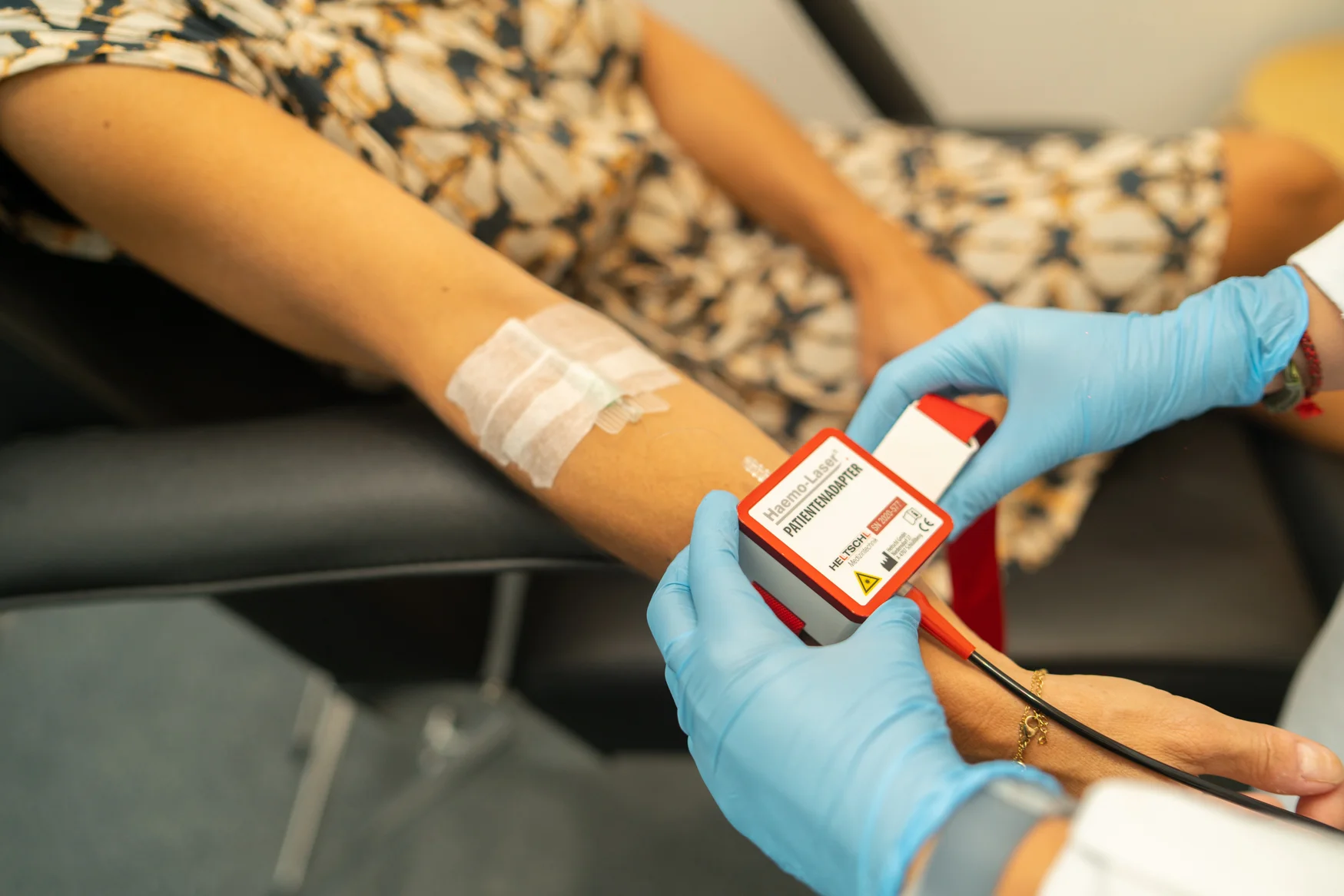The biological effects of laser therapyThe biological effects of intravenous laser therapy therapy
HEMO-LASER

HEMO-LASER
Laser light: what is it?
Laser light is a light with special qualities. This light is full of energy and can be visible or invisible. Its high energetic content and special qualities allow very effective therapeutic effects in many diseases.
Cellular effects
Healing effect
The absorbed laser beam increases ATP (adenosine phosphate) synthesis. By stimulating cell renewal, the rate of fibroblast and epithelial cell separation is accelerated, macrophage cell activity is enhanced and phagocytosis is increased.
These effects allow for faster healing.
Analgesic effect
The release of communication agents with anti-inflammatory and analgesic effect is favored. (serotonin and endorphin).
The release of pain triggering agents, i.e. transmitter mediators (substance P, bradykinin, prostaglandins), is hindered producing an analgesic effect.
Anti-inflammatory and anti-edematous effect
The mediators mentioned above also have an anti-inflammatory effect and an anti-edematous effect by improving microcirculation.
Hemo-laser therapy improves metabolism, increases blood circulation and thus oxygen supply.
Applicationsnis médicas of the hemo-láser
- Wound treatment: leg ulcers (decubitus), postoperative, acute and chronic wounds.
- Sports medicine: bruises, contusions, muscle ruptures and sprains, strains, tendinitis (tennis elbow).
- Orthopedics: Osteoarthritis, abscesses and inflammations after prosthetic…
- Gynecology, urology and obstetrics: breast inflammation, mastosis, cesarean section, episiotomy, genital herpes.
- Oncology and radiotherapy: mucus, stomatitis, radiodermatitis.
- Neurology: treatment of acute and chronic pain, postoperative and phantom pain, ear and body acupuncture.
- Dentistry: treatment of pain and wounds after extractions, prosthesis placement, mouth ulcers, gingivitis, cold sores.
- Antimicrobial and photodynamic therapy for germ reduction.
Indications for hemo-llaser therapy:
- General disturbances of the state and states of weakness.
- Inflammatory and chronic diseases of the musculoskeletal system (osteoarthritis, polyarthritis)
- Patients with fat metabolism disorders, hypercholesterolemia and excess triglycerides.
- Type 1 and 2 diabetes
- Acute and chronic recurrent hepatitis, mainly due to B and C viruses.
- Cirrhosis of the liver
- Chronic lung disease (COPD)
- Circulatory disorders
- Chronic pain and injuries
- Allergies
